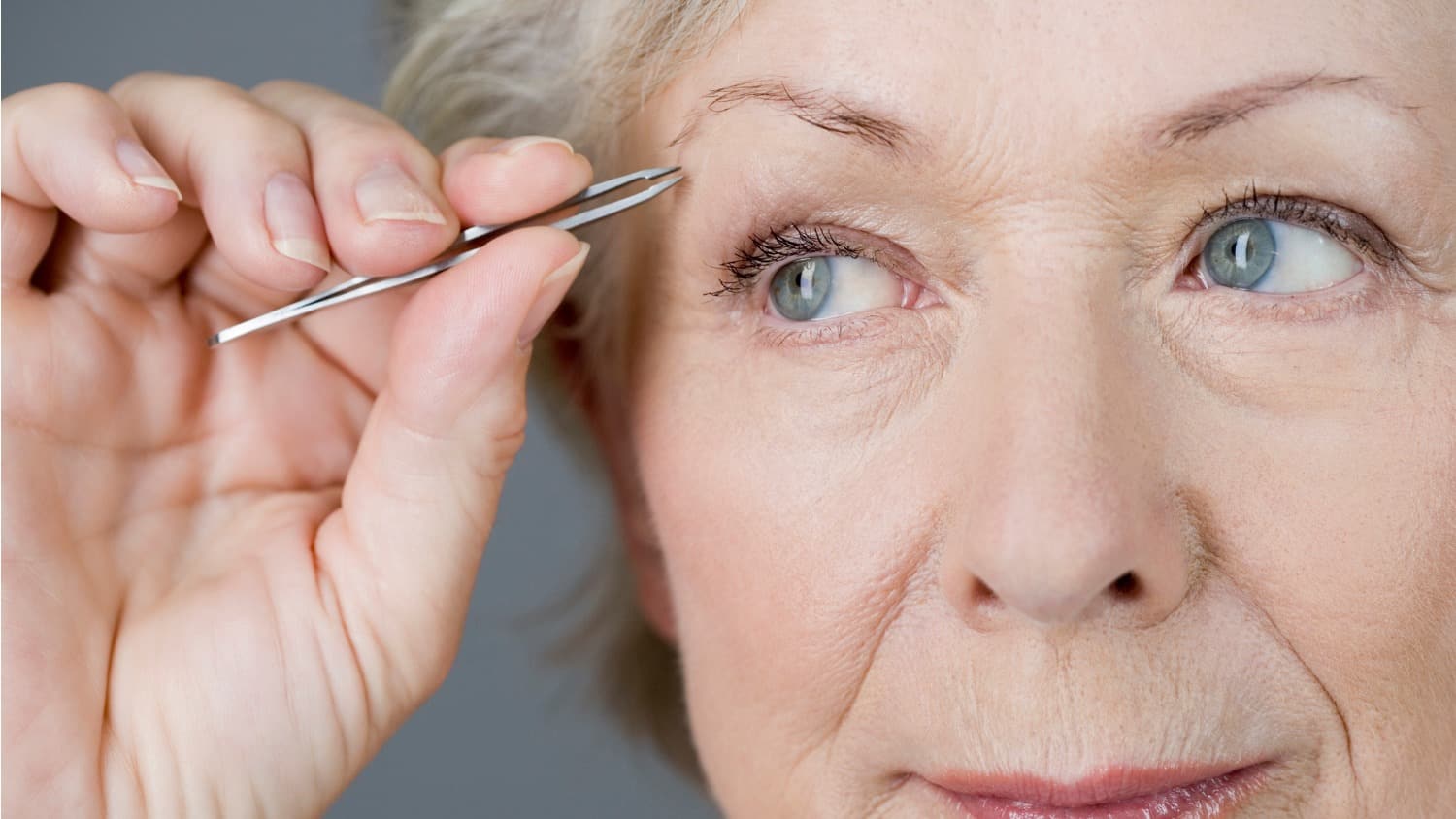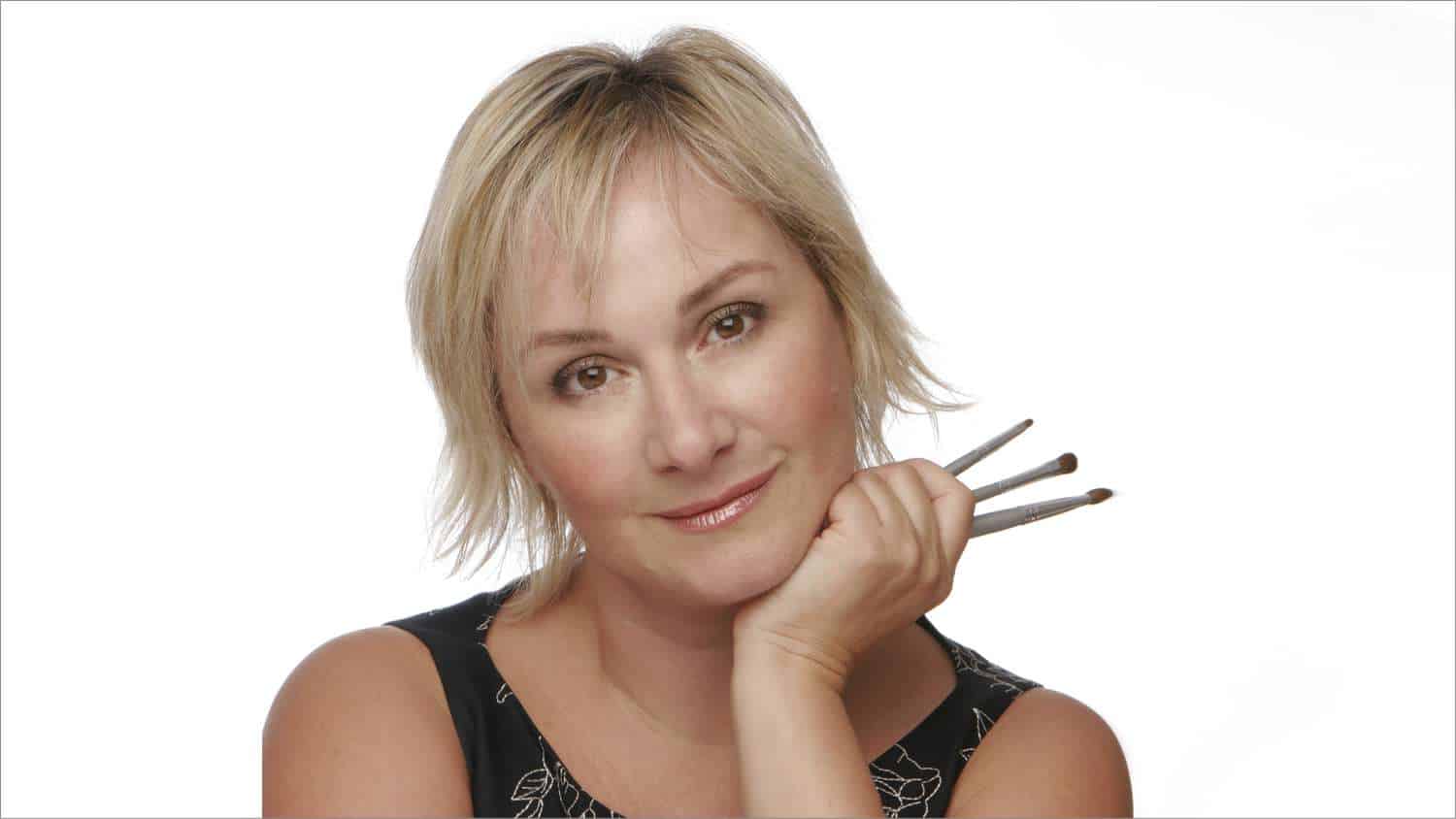7 Little Known Truths About Sunscreen and the Senior Woman (+ Video and Bonus Tip)
When I was about 20 years old, I was living in London. In the summer, a friend and I took a vacation in Portugal with a single goal in mind – to get the deepest, most outstanding tan possible. Living in London had left us both with pasty white skin and an over-consumption of tea, so it was to be sunshine, dancing, and various forms of alcohol for one week.
Sitting on the beach for our first day as sallow-faced sun-worshippers, my friend pulled out her bottle of baby-oil and we coated ourselves in the greasy substance. We then fell asleep in the hot midday sun like two very white, round sausages.
When we woke up, I had the worst sunburn of my life, and had to cover up for the rest of our holiday, not to mention the lizard skin and massive pealing that ensued.
Now, as a 54-year-old woman with sun damaged skin, I really wish I had tossed that baby oil in the garbage!
Many of you have similar stories, and the consequence for most of us is that now we religiously apply our sunscreen, wear our hats, avoid the sun, and learn makeup techniques to cover brown spots.
Having said that, even though we are more aware of the benefits of using sunscreen, the rates of melanoma skin cancer have tripled in the last 35 years. What’s going on?
The Environmental Working Group (EWG) has published some fascinating and crucial information regarding the usage and effectiveness of sunscreen. Here are my seven truths about sunscreen that every senior woman needs to know.
Sunscreen Alone Doesn’t Prevent Skin Cancer
There is no proof that sunscreens alone prevent most types of skin cancer! You need to also wear a hat, reapply often, and trade-off wearing protective clothing. Be aware that tanning beds increase your risk of melanoma by 75%!
SPF Is Misleading
A high SPF content in a sunblock is very misleading. For example, SPF 100 only marginally protects you more and longer than say an SPF 30. Stick with 15–30 SPF for the best results and reapply every two hours if out in the sun.
Watch out for Vitamin A
Vitamin A is a common ingredient in sunscreen products, yet studies indicate it may contribute to skin tumors and lesions when used in the presence of sunlight. According to the EWG, we should avoid “retinyl palmitate, retinyl acetate, retinyl lineate, and retinol in sunscreen products.”
The FDA and Chemicals
European sunscreens provide more protection than those manufactured in the US. Why? Because the EU government bans the combination of certain ingredients which make “broad spectrum” products weaker and less effective, while the US government does not.
According to Safe Cosmetics, “The EU (…) bans 1,328 chemicals from cosmetics that are known or suspected to cause cancer, genetic mutation, reproductive harm, or birth defects. In comparison, the U.S. FDA has only banned or restricted 11 chemicals from cosmetics.”
Avoid Oxybenzone
When the FDA finally began to examine sunscreen safety, it did so in regard to active ingredients from the late 1970s and without reviewing the toxicity of the ingredients.
In February 2019, the FDA released information which says there is “insufficient health and safety data to designate 12 of the 16 sunscreen filters allowed for use in the U.S. as generally recognized as safe and effective, or GRASE. These 12 ingredients include some of the most commonly used UV filters, including oxybenzone, octinoxate, octisalate, octocrylene, homosalate, and avobenzone.”
According to the agency, “nearly all of these sunscreen active ingredients (…) have limited or no data characterizing their absorption.” In other words, we don’t know if or how much they disrupt hormones and cause allergies. The EWG advises avoiding sunscreen products with these ingredients, especially oxybenzone.
Get UVA and UVB
Sunscreen doesn’t protect the skin from all types of sun damage. Free radicals from the sun can damage DNA and skin cells, accelerate aging, and may cause skin cancer.
If you pick a sunscreen with poor UVA protection, apply too little, or infrequently, you may inhibit sunburn, but not necessarily other risk factors. Today many experts realize that both UVA and UVB exposure may contribute to melanoma risk.
Are You Low in Vitamin D?
25% of Americans have borderline-low levels of vitamin D. This is partly because we don’t go out very often, and when we do, we use sun protection which inhibits the production of vitamin D in our skin.
If this is you, you should be taking a vitamin D supplement. Symptoms like fatigue, bone pain, joint pain, sour mood, low energy, and weight gain are all signs of Vitamin D deficiency.
What to Buy
Most sunscreens contain the above questionable ingredients; but the EWG has a list of products considered safe. From among them, my favorite are 100% Pure Body Sunscreen Stick, 100% Pure Everywhere Sun Stick, and Aveeno Positively Mineral Sensitive Skin Face Sunscreen Lotion.
Wear a Hat with UPF
Do you need a good summertime hat with UPF (Ultraviolet Protection Factor)? My favorite line of hats is the Wallaroo Hat Company, based in Boulder, Colorado. They offer an excellent assortment of hats recommended by the Skin Cancer Foundation.
My encouragement to all of you is to go outside and be in nature! At the same time, use non-toxic sunscreen, wear your hat, and take Vitamin D. Happy Summer!
How safe is your sunscreen lotion? How do you know? How do you shop for sun block products? Please share with our community!






